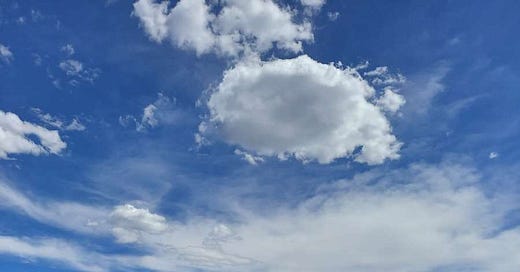6/11/22 - 6/13/22
On this visit to Nevada, we traveled through small desert town after small desert town. No matter how “nice” one of these towns might be, they always look run down and abandoned to me. As mentioned in my blog post about Wyoming, the sagebrush desert is the worst. Since Winnie is such a high-profile vehicle, the constant high winds made it hard and borderline dangerous for us to drive, especially since it’s something we weren’t used to.
We stopped in a town called Ely to get gas. A dust storm picked up while we were pumping, and we got pelted with small rocks and other debris in the middle of a sunny afternoon. In the same town, we were on the hunt for water to fill up Winnie’s tank. We usually just fill up our tank from water fountains, but that is completely out of the question for desert towns because they don’t have fountains at all, probably due to not having the extra water to spare. There were no RV parks we could stay at for water, so our last option was to find a paid water refill station in a grocery store. We visited two small general stores with no luck, and the last one told us to try one more store down the road. We see the water fill up outside and make our way inside the store to ask the workers if it was working. She said that she wasn’t sure so we tried it, and thankfully it was. This was just yet another instance where the desert made surviving in Winnie more difficult than in other places we’ve been.
One good thing about Nevada is that 63% of the land belongs to the federal government, The Bureau of Land Management (BLM), so finding places to camp was very easy for us. Since there is so much of this land available, we were usually alone or far away from other people.
The one place we legitimately enjoyed in Nevada was Lake Tahoe (which only half belongs to them anyways). This was the first body of water (and trees) we had seen in days and we decided to have a little beach day. Lake Tahoe has experienced intense forest fires in the last couple of years, which is so sad and devastating to see. This was the first time we had ever seen actual damage done by fires, but certainly not our last.
Many things contribute to the intense summer forest fires in the west. Some I have mentioned in my blogs already, such as the high winds that aid the fires in spreading. Of course, a large contributor to fires is the lack of concern from humans who don’t follow fire restrictions or fail to fully extinguish their campfires. However, the human activity that contributes the most to large forest fires, which is never talked about, is fire suppression. We, as humans, don’t want to see our favorite places, such as National Parks and State Parks, burned. So, we do a great deal of fire control and suppression to prevent natural forest fires from occurring. This, unfortunately, causes imbalances in the natural regulation of these ecosystems. To understand this, we must first understand what happens to an area after a fire. Pioneer species of plants, often grasses, start the regrowth first, which allows succeeding plants and animals to thrive here as well. These pioneer species are often fast-growing, quick-burning, and sometimes even fire-resistant (like aspens!). Eventually, different plants and animals begin to establish here, such as large conifers that are much slower growing and not as fire resistant as the first plants that established themselves. Although we don’t want to accept it, this is a natural cycle of forests. Fires regulate and allow for more diversity and nutrient recycling in ecosystems, even in the ecosystems that we love and enjoy so dearly. When we suppress natural fires, we allow less fire-resistant plants and trees to thrive, which burn very easily when forest fires eventually do occur. This is one of the big reasons forest fires get out of control because the plants and trees that we allow to grow and thrive in fire-controlled areas will burn longer (think conifers, such as pine trees). Because of this phenomenon, it may be best for improvements to be made to the way we control natural fires.
Fires are something Nick and I were not used to going into this trip because it isn’t a common occurrence in Illinois. We eventually experienced fires blocking our driving routes in Oregon and breathing in Montana air thick with fresh forest fire smoke. These are all things people who live in the West consider to be normal, but were very big culture shocks to us.
Places visited:
- Ely
- Lunar Crater
In-state miles hiked: 3.82
Total Miles hiked: 100.62





Merry Christmas and a Happy New Year to to you two. You are having an eye opening trip for sure. I enjoy reading of your adventures. Be safe.